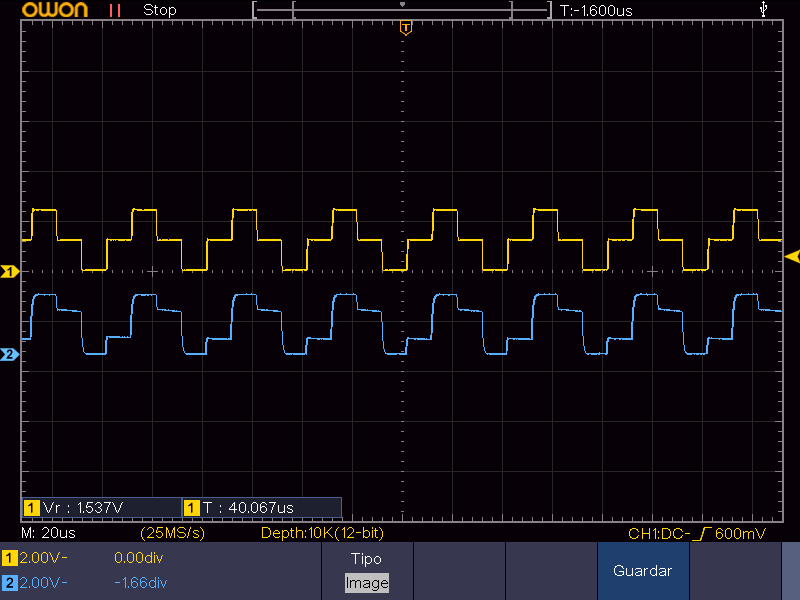Hello members of the forum, continuing with the query made: “FDC1004: Assistance designing with TI products”
After advancing with the experiments and achieving a reasonable variation between the measurements with and without an objective, which would allow the detection of the seedlings.
We are trying to eliminate environmental interference with no success, specifically human interaction with the device, we have applied what is stated in application note SNOA926A, but we get almost identical results to the application without shield.
We attach capture of the oscilloscope with CIN4-FDC1004 on channel 1 and SHLD2-FDC1004 on channel 2, we notice that the signals are not perfectly identical, is that the problem for which the shield implementation has no effect?

NOTE: We are working with the following registry configuration:
MEAS1_ = 752 2500
MEAS2_ = 0 0
MEAS3_ = 0 0
MEAS4_ = 0 0
CONF_MEAS1 = 7C00
CONF_MEAS2 = 5C00
CONF_MEAS3 = 1C00
CONF_MEAS4 = 1C00
FDC_CONF = 988
OFFSET_CAL_CIN1 = 0
OFFSET_CAL_CIN2 = 0
OFFSET_CAL_CIN3 = 0
OFFSET_CAL_CIN4 = 0
GAIN_CAL_CIN1 = 4000
GAIN_CAL_CIN2 = 4000
GAIN_CAL_CIN3 = 4000
GAIN_CAL_CIN4 = 4000
Manufacturer_ID = 5449
Device_ID = 1004
Regards, Cesar.


